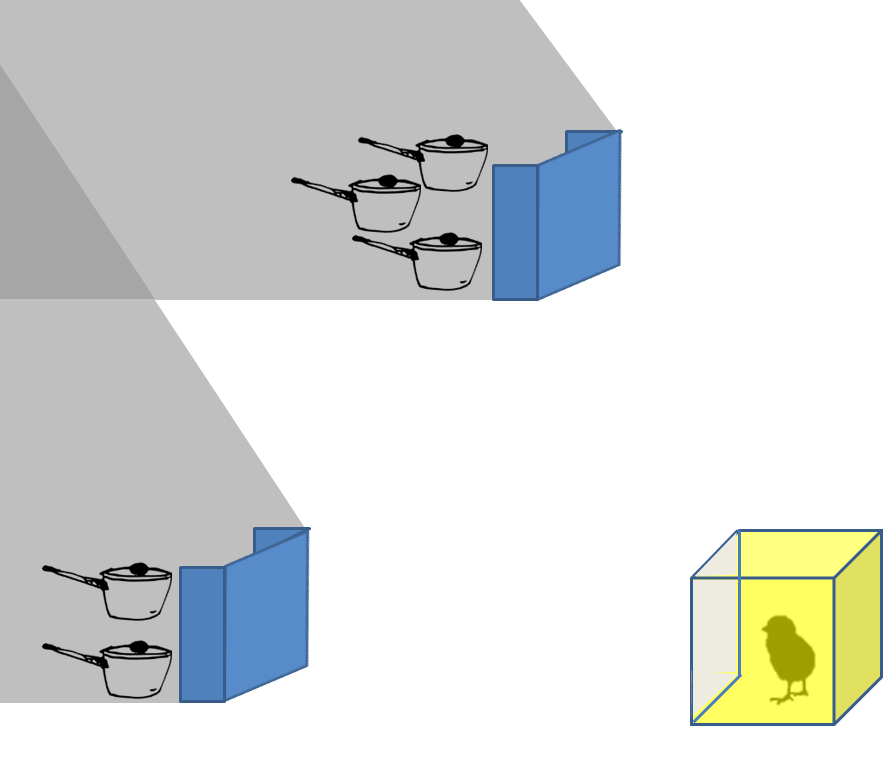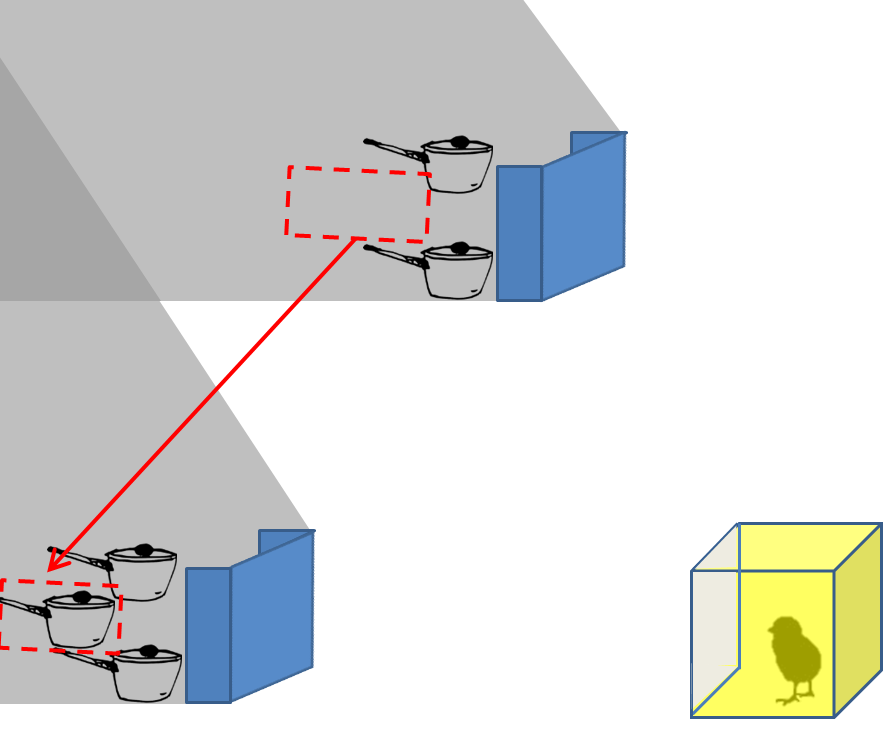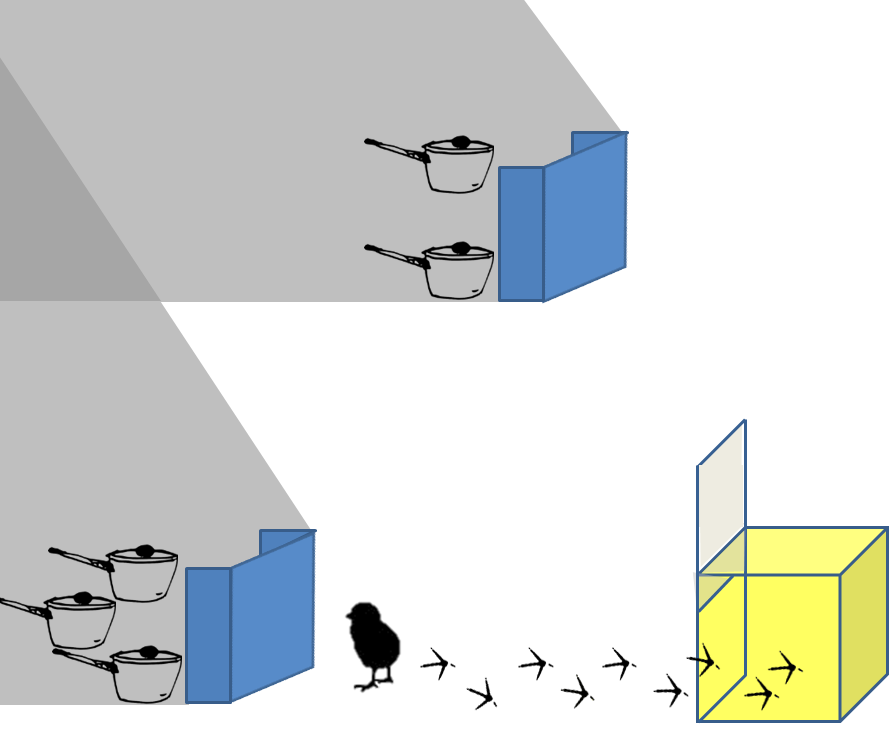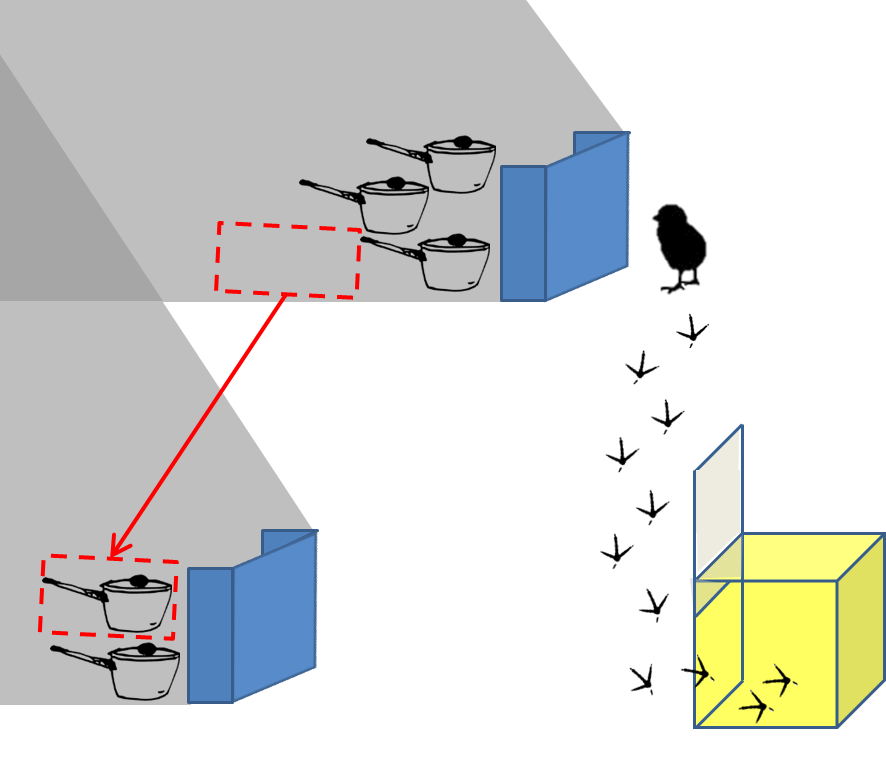Yes, chickens can do math. Okay...only simple math, but math nonetheless. How do we know?
A study conducted in Italy showed that chicks can add and subtract using numbers smaller than five. The study was conducted by researchers from the Centre for Mind/Brain Sciences at the University of Trento and the Department of General Psychology at the University of Padova. The researchers were: Rosa Rugani, Laura Fontanari, Eleonora Simoni, Lucia Regolin and Giorgio Vallortigara.
Here’s how the study worked.
Step 1: Get a chick to look at two screens.
How do you make a chick do this? They kept the chick in a box so she couldn’t leave and they made one wall of the box glass so she could see the two screens.
Step 2: Put five objects behind the screens.

They put 3 objects behind the right screen and 2 behind the left screen (3+2 = 5). The screens were opaque, so the chick could see them put the objects behind the screen, but once behind the screen, the objects were out of view.
They didn’t use kitchen pots in their experiment. They used small yellow plastic rounded objects. Ever eaten a Kinder Surprise egg before? You know that plastic capsule in the middle that could house a toy car, plane or something with plastic pieces you can build? They used those yellow capsules. Mighty fine example of upcycling.
Step 3: Move one object.

Then they moved one object from behind the right screen to behind the left screen. Now, there are 2 objects behind the right screen (3-1=2) and 3 objects behind the left screen (2+1 = 3). Note: we still have 5 objects in total (2+3=5). Remember, the chick could see the object move across the room, but she still couldn’t see the objects behind the screens.
Step 4: Free the chick.
Set the chick free from her watching position allowing her to look behind the screen of her choice. Record which screen she looks behind first.
Here’s what happened:

After repeating this experiment 20 times for 19 different chicks, they found that chicks significantly more frequently chose the screen that ended up with the larger number of objects. It didn’t matter whether the scientists started off with 3 on the right and 2 on the left or vice versa—the chicks kept choosing the screen that had the bigger number (3).
What if it was only an addition thing?
It’s unlikely. The scientists also tried the experiment again with another number combination—starting off with 4 objects behind 1 screen and 1 behind the other screen. In this case, they moved 1 object from the group of 4 to join the single object. In these experiments the chicks more often chose the screen that had something subtracted from it. In other words, they once again chose the screen with the larger number of objects (3).

What if it was only a surface area thing?
That’s also unlikely. The scientists did a similar experiment using red squares with different areas. They put a set of two red squares behind one screen. Behind the second screen they put a set of three red squares. These squares were smaller. The total area of the set of three squares equaled the total area of the set of two squares.

Despite the size difference, significantly more chicks again chose the screen hiding the larger number of objects (3).
Should we care?
Maybe not. The math proficiency level demonstrated by these chicks is easily surpassed by basic calculators found on most phones. And the likelihood of a day arriving, on which you are held against your will and your captor will set you free, if and only if you figure out the sum of 2+3, using a chicken, is low (Oh, and on that day you will have also forgotten basic addition and your phone, and you'll be carrying a live chicken).
Or maybe we should care. Maybe understanding chickens’ brains will help us better understand brains in general. Or maybe this means that chickens notice more than we may have thought, like the number of times we go in to feed them or clean their coop.